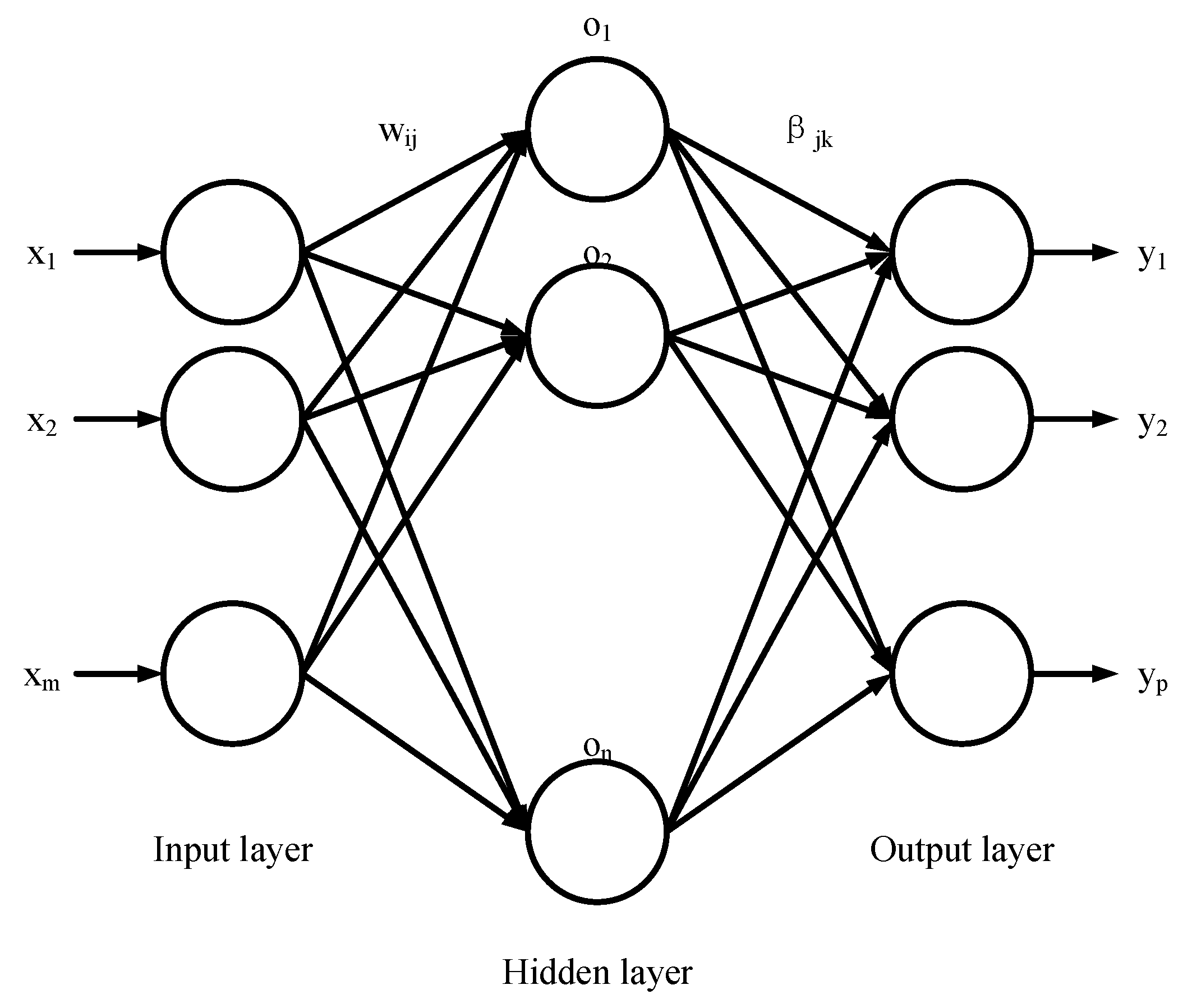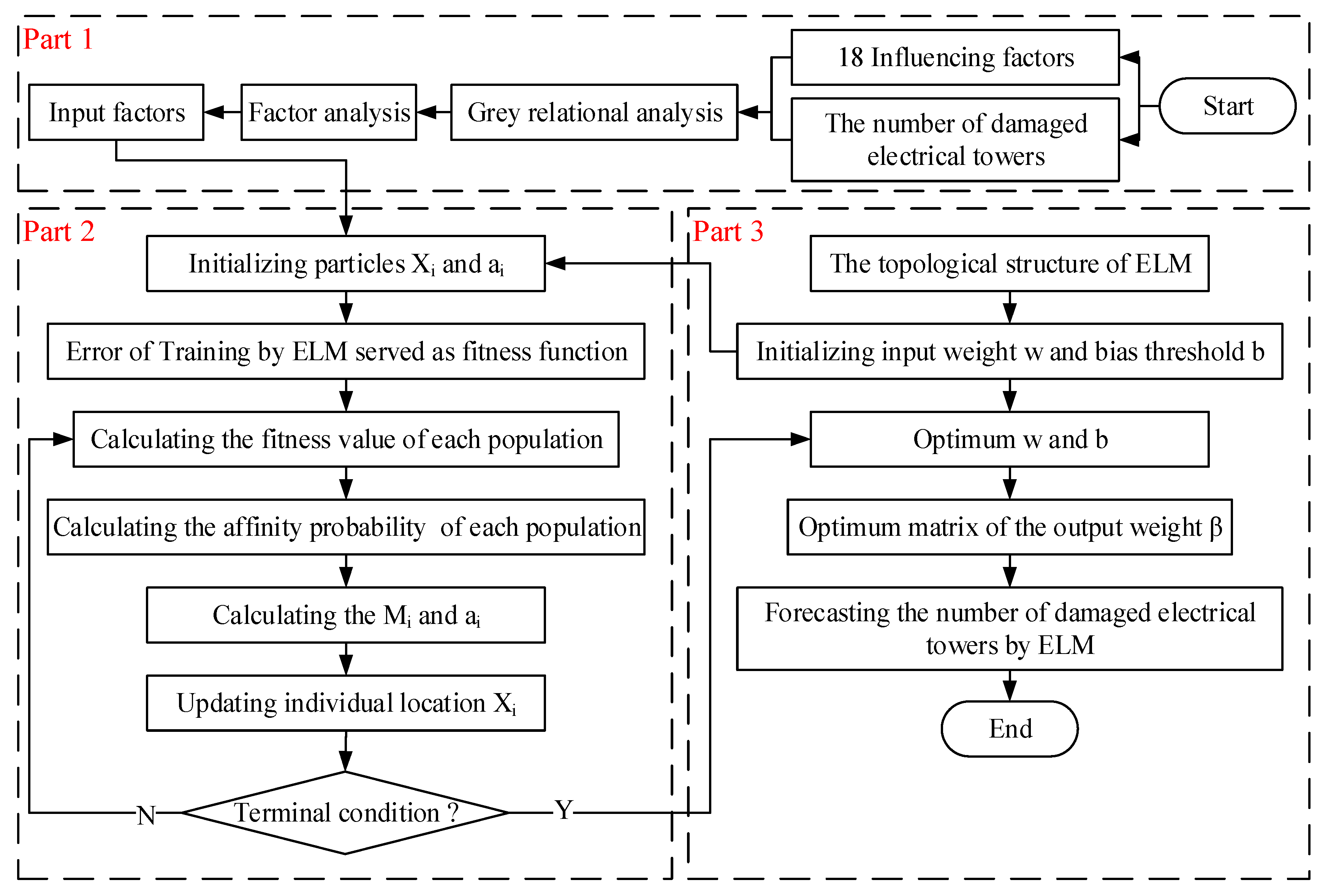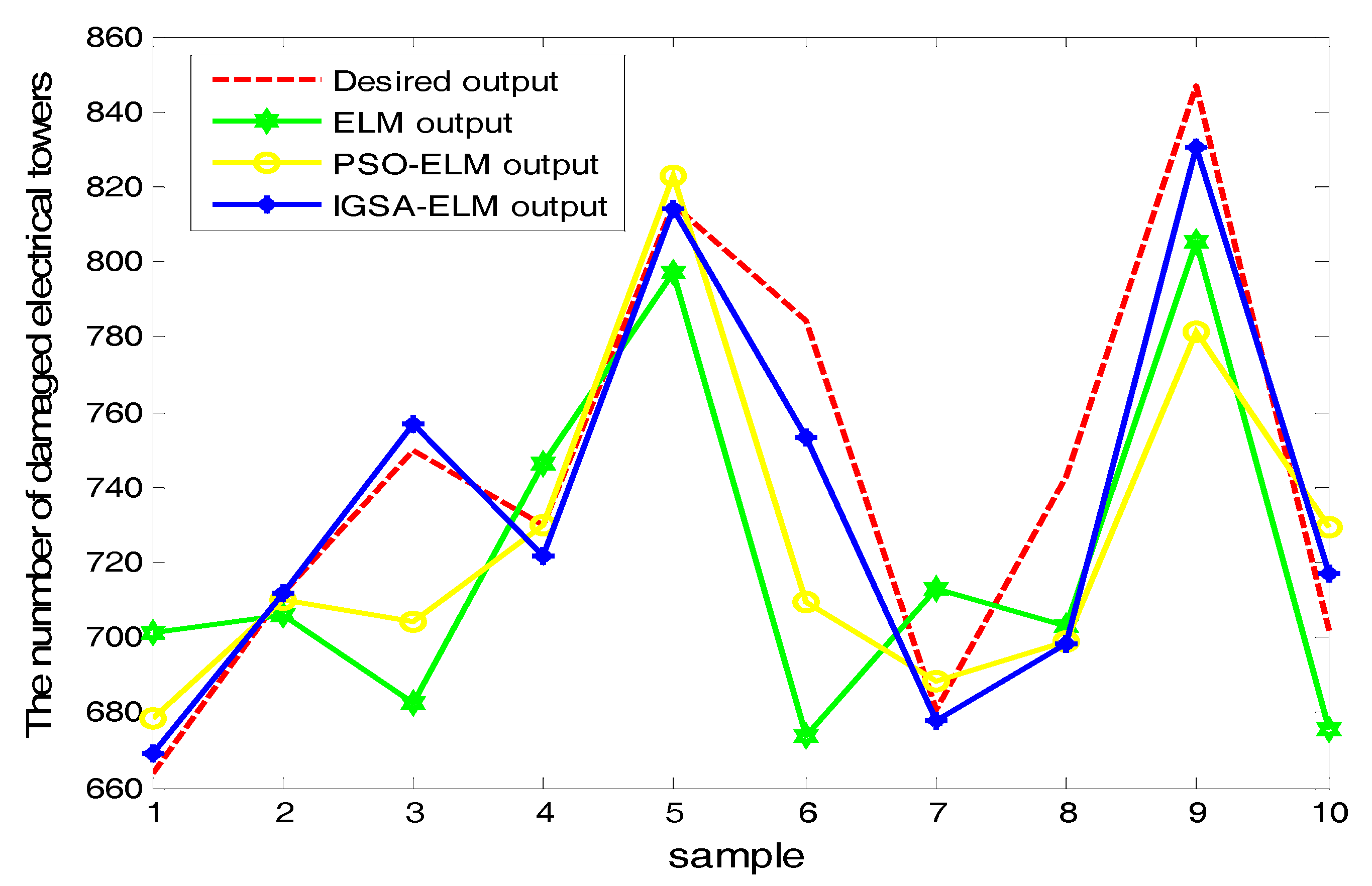1.1. Motivation
With the continuous development of power production and consumption, the requirements of power reliability and high-quality service are gradually increasing. In light of this, it is necessary for power companies to provide high quality power supply services, and improve the ability of withstanding disasters. As we all know, China is one of the countries most seriously affected by typhoons, with 9.09 average annual tropical cyclone landings [
1]. Particularly, Guangdong Province, located in the coastal area of southeast China, is most affected by typhoon disasters [
2]. According to the Guangdong Provincial Meteorological Yearbook, the number of typhoons landing in the Guangdong province reached 226 from 1945 to 2017, with an average annual number of 3.1, ranking first among coastal provinces in China [
3,
4]. The main form of typhoon damage to low-voltage power grid lines is to destroy the line nodes and cause an overall connection failure, which poses a threat to the safe and stable transmission of electrical energy [
5]. Specifically, the strong typhoons, along with the continuous heavy rain, will result in a large number of broken lines and fallen towers, causing power hazards and safety accidents in local areas. In addition, the power repair work is extremely vulnerable to serious obstacles, which causes huge economic losses to society [
6]. According to “The 13th Five-Year Plan for Electric Power Development (2016–2020)”, it is proposed to comprehensively improve the level of intelligent construction and establish a safety early warning system for natural disasters such as mountain fires, ice disasters and typhoons [
7]. Compared to other sources, the power outage time caused by typhoons accounted for about 85% of the total annual power outage hours. Advancing with times, China Southern Power Grid plans to build a typhoon response mechanism to enhance disaster resistance [
8]. Therefore, studying the typhoon damage to the low-voltage lines in China is conducive to improving the wind-resistant capacity and repair efficiency, which is of great significance to the development of the power grid. In order to achieve the above objectives, it is necessary to conduct an in-depth analysis of the influencing factors of the damage caused by typhoons to the low-voltage lines in China and make predictions. On this basis, effective measures are proposed to prevent typhoon hazards and prepare for rush repairs.
1.2. Literature Review
Throughout our study of the prior literature, the studies were mainly divided into two categories: one was the analysis of the influencing factors of typhoon damage to power facilities, and the other was the prediction of the damage using influencing factors as input values.
In terms of influencing factors, relevant scholars have mainly studied the impact of typhoons on the power grid and analyzed its causes. According to the pre-existing social, physical and economic vulnerabilities, Tatebe et al. [
9] adopted geographic information system (GIS) technology to explore the impacts on New Orleans in the context of Hurricane Katrina. The result revealed that pre-existing socio-economic conditions played a significant role in disaster recovery. Meanwhile, some policy recommendations were put forward to reduce social and economic vulnerabilities to natural disasters. By studying the damage to power facilities caused by typhoon wind speeds in North Korea, Jung [
10] indicated that the degree of damage to wind power generation was closely related to the wind level. Researching on the damage of power delivery systems caused by the 2013 Super Typhoon Haiyan in Philippines, Dai et al. [
11] suggested a design framework with a holistic approach including a strong backbone line system. Based on a wind turbine collapse accident, Chou et al. [
12] used finite element method to investigate the causes of collapse, with the ultimate purpose of strengthening risk prevention. Lei et al. [
13] indicated that structural measures are not sufficient to resist the damage caused by typhoons. As a result, a risk-sharing model was put forward aiming to combine the government, insurance companies and victims to respond to the impacts of typhoon disasters. Yang et al. [
14] studied the cascading failures in complex systems by large-scale modeling to analyze the North American power grid, the result elucidated the origins and causes of cascade failures related to grid design and operation, which demonstrated vulnerability analysis methods for a broader cascading-prone network. In term of the effects of typhoon on wind turbine operating, Li et al. [
15] clarified that the wind, drastic turbulence and wind direction were major factors of wind turbine failures, and put forward some advice for strengthening wind resistance design. With regard to power grid wind disaster emergencies, Zhang et al. [
16] proposed the grey relational analysis-multi-objective genetic algorithms method (GRAMOGA) for the case adaptation. According to the typhoon impact of the Guangdong Power Grid in 2009–2013, Zheng and Zhong [
17] explored the main causes and laws of destruction, putting forward some corresponding countermeasures. Based on the blackouts caused by natural disasters, Wang et al. [
18] consolidated the prediction methods of power system disturbance, aiming at hardening the grid. As a consequence, challenges and new research opportunities were put forward. Zhang et al. [
19] indicated that the main reason for the damage caused by typhoons to the transmission line was the insufficient bearing capacity of the designed transmission tower structure, resulting in large-scale inverted towers and long-term power interruption. In general, there are certain limitations in the analysis of the influencing factors in the existing literature, with few factors considered. Nevertheless, the statistical analysis method can effectively solve the multivariate problem. In this paper, factor analysis method was adopted to comprehensively study the influencing factors of typhoon on low-voltage lines, extracting the main impact factors.
With respect to the prediction of damage, a few scholars have predicted and warned about the damage caused by typhoons to the power system. Through analyzing the correlation relationship between the salt environment and the actual damage of electric power distribution equipment caused by typhoons, Shumuta et al. [
20] established a damage evaluation model to estimate the damage risk potential of the electric equipment. Based on the stress intensity interference model, Geng et al. [
21] proposed a method for early warning of the damage in electric transmission lines aiming at putting forward a reasonable warning output. Schaefer et al. [
22] believed that the most large-scale network outages are the reasons behind cascading failures. Based on the nature of cascades and the essentials of the network dynamics, they proposed a forecasting method to predict and model cascading failures in power grids Yu et al. [
23] integrated historical data and established a logistic model with metabolic probability of power tower as the risk indicator to forecast the damage probability caused by typhoons. To analyze typhoon-induced hazards, Kim et al. [
24] established the predictive extreme value theory model, with four meteorological variables including daily precipitation, maximum wind speed, instantaneous wind speed, and hourly precipitation input as parameters. Jun et al. [
25] established a region power grid wind hazard precaution system, consisting of the statistical diagnosis model and the numerical forecasting model, to solve the problem of the wind hazard assessment in power grid. Li et al. [
26] adopted the grey feature weighted support vector machine model based on particle swarm optimization (PSO-SVM) to analyze the damage discipline of typhoons, which contributed to improving the ability of defending against typhoons. Yates et al. [
27] evaluated the hazards of climate-induced electrical infrastructure through the case of Hurricane Sandy. Mohammadi et al. [
28] adopted game theory to enhance efficiency of the underlying communication network. With cross-layer interference of femto users (FUs) and macro users (MUs) selected as classification standard, the essential problem was converted into Stackelberg game jointed with convex optimization problem. Finally, a closed form solution was proposed and the effectiveness of the mathematical model was verified by simulation results. In summary, most of the literatures are based on mathematical theory models for prediction, which remains over-fitting and poor generalization capability. A few scholars introduce intelligent algorithms for prediction with fewer variables as input values, which reduced the prediction accuracy.
To sum up, the existing literature on analysis of the destructive effects of typhoons on the power grid is insufficient, mining less influencing factors. Furthermore, intelligent algorithms are seldom applied to the prediction of typhoon damage to low voltage lines, which has advantages in nonlinear forecasting.
1.3. Contribution
In order to overcome the above problems, this article selects the influencing factors of typhoon damage to low-voltage lines in China by grey correlation analysis, and the factor analysis method is used to extract common factors as independent variables, which contributes to screening the key factors and reducing their quantity. In addition, the extreme learning machine optimized by improved gravitational search algorithm (IGSA-ELM), with higher accuracy compared to existing prediction methods in this field, is adopted for the first time to predict the amount of typhoon damage.
The remainder of this study is organized as follows: firstly, the GRA is applied to analyze the correlation degree between multiple influencing factors and the number of fallen towers, selecting 18 influencing factors to form a perfect index system. Secondly, with the 18 influencing factors divided into five categories, six common factors are proposed as input values of the prediction model by factor analysis, aiming to avoid excessive reduction of factors and information distortion. Thirdly, Compared with ELM and PSO-ELM, the IGSA-ELM model is established to predict the damage, using 50 samples from 1999 to 2015 for training and 10 samples from 2016 to 2017 for testing. Finally, this paper draw conclusions based on the above research.








